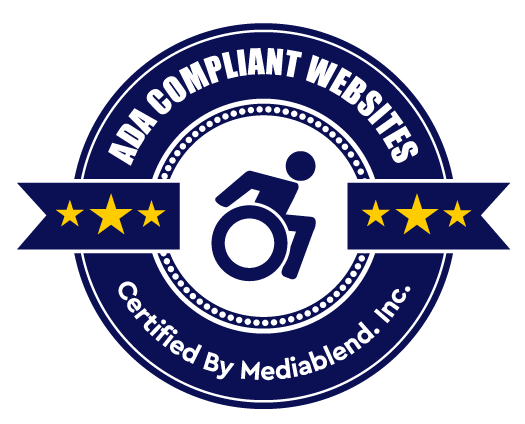Top 7 Ways to Improve Your Digital Marketing Strategy

Today, 81% of peoplestart their buying journey online, which means if you offer a service or sell a product, you need an online marketing strategy. There’s a world of potential customers out there looking for exactly what you offer—but if you can’t provide them with the information or incentive they’re looking for, they’ll look elsewhere.A digital marketing strategy is the backbone when it comes to building your brand’s online presence. Whether you’re looking to kick off an aggressive paid advertising campaign or want to take an evergreen approach to organic content development, your marketing strategy will guide it. The secret to success is having an online marketing strategy that’s well-designed and easy to execute against. If you’re intent on putting together a winning online marketing campaign, make sure your marketing strategy includes all the essential building blocks for success. Here are the 7 most important factors to consider.
1. Identify Your Target Audience(s)
Most businesses know their audience to some degree. When it comes to developing a digital marketing strategy, it’s important to be as specific as possible. Digital ad tools give you the ability to be very specific in who you target with your messaging, which means taking the time to understand exactlywho you’re talking to.
A good rule of thumb is to develop customer personas. For example, “Single Mom Susan” might be a working mother in her mid-20s who’s thrifty and conservative with her spending. Meanwhile, “Founder Frank” might be an entrepreneur in his mid-30s with disposable income and a willingness to try new things. Use personas to develop targeted messaging that’s specific to the person who will see it.
2. Inventory Owned vs. Paid Media
A crucial step in creating a robust online marketing strategyinvolves understanding which digital channels you’re going to advertise through. Effectively, this breaks down into owned vs. paid media channels.
- Owned media channels are those where you control the narrative. Often, there’s no real cost to utilize these channels; however, many offer paid features. Examples of owned media channels include your company’s website, its social feeds or an off-site blog.
- Paid media channels are those that you pay to participate in. Think Google Ads or paying to have your business included in a digital directory. Paid media often has a higher standard of reputability, with a larger audience that can help you increase your reach.
Digital marketing tactics will change across owned and paid media channels, so it’s important to take stock of your options and tailor messaging that makes the most of each channel.
3. Develop Compelling Messaging
Speaking of tailoring messaging, one of the secrets to a successful marketing or personal branding strategy is to make sure your messaging matches the medium you’re using to deliver it. What’s right for one medium might not be applicable to another.
Take short-vs. long-form messaging, for example. A tweet offers just 280 characters—about 25 words. It’s the ideal medium to tease a bigger idea—something like a 750-word blog post on your website. The same goes for a quick-hitting sales email. It’s a great medium to deploy benefits-driven messaging—especially when it’s linked to an ecommerce product page with a feature-rich description.
Don’t be afraid to experiment with messaging across different mediums, and keep in mind the strengths and weakness of each medium when it comes to creating compelling messaging.
4. Create an Editorial Calendar
If you’ve followed the first few steps on this list, you’ve likely discovered that there’s a lot to keep track of! Different mediums and messaging also require different timing, which means looking into the future as you develop your personal branding strategy. The best tool for keeping track of everything? An editorial calendar.
An editorial calendar is simply a forward-looking calendar that lists all of your individual marketing messages and when they’ll go live on various channels. It’s a visual way to keep track of your many digital marketing efforts—and, it’s a great place to collect and organize marketing strategy ideas.
Try to plan your editorial calendar a month ahead of time, or as far ahead as 3 or 6 months, if possible. The further ahead you can plan and organize, the easier it’ll be to focus on messaging, deployment and results tracking.
5. Set and Track Key Performance Indicators
How do you know if what you’re doing is working? The answer depends on your ability to set Key Performance Indicators (KPIs) and measure against them. KPIs are a cornerstone of any digital marketing strategy and they emphasize what’s important to your business when it comes to marketing success.
KPIs are often rooted in the design of a marketing campaign or a core business objective. What are you trying to accomplish? Here’s a look at some common digital marketing KPIs:
- Open and click rates on marketing emails.
- Page views and time-on-page metrics for blog posts.
- Form requests submitted through CTA forms.
- Conversion rates for ecommerce checkout pages.
Notice that in these examples, each KPI is attached to a specific medium. It’s also wise to set goals after tracking your KPIs for a period. Monitoring these indicators is a great way to tell if what you’re doing is working, or if there’s room for improvement.
6. Map Out the Buyer’s Journey
A buyer journey consists of the steps needed to get from the first point of interaction to the point of conversion. Depending on where your online marketing strategy reaches a customer first, their buying journey may look different from someone else’s. This is why it’s important to set up sales funnels and map progress through them.
Sales funnels are pre-defined buyer journeys that make it easier for businesses to anticipate next steps—and market more effectively. For example, if someone clicks your LinkedIn ad but doesn’t finish filling out a contact form, you can set up a retargeting campaign to deliver messaging that urges them to finish the form. In understanding the buyer’s journey, you can help them get to the next step.
7. Refine Your Online Marketing Plan
A great marketing framework is built around the idea that a business is always evolving, and so too should its marketing efforts. As you track and measure KPIs, refine messaging to fit medium and better-define the buyer’s journey, your marketing plan should update and evolve to reflect these learnings.
As you get more comfortable and familiar with mapping out an editorial calendar and organizing your digital marketing strategy, you’ll also learn what works best for your business. Make your marketing plan a living document and use it as the basis for everything you do. In time, it’ll become your de-facto resource when it comes to planning bigger, bolder, more exciting digital marketing campaigns.
Putting the Pieces Together for Marketing Success
It’s important to remember that digital marketing is an ever-evolving concept. As new tools and mediums spring up online, marketing evolves to accommodate them. Building a strong framework for your strategy will help your efforts evolve right alongside new best practices and emerging concepts.
Having trouble developing a digital strategy from start to finish? It’s never a bad idea to work with a digital marketing and web design agency that can help. Let the experts build out the core fundamentals of a plan, while you focus on getting into the specifics of how you want to market your business. It’s a winning strategy—and the one you need to stand out online.
NAVIGATION
© 2023 All Rights Reserved | MediaBlend











